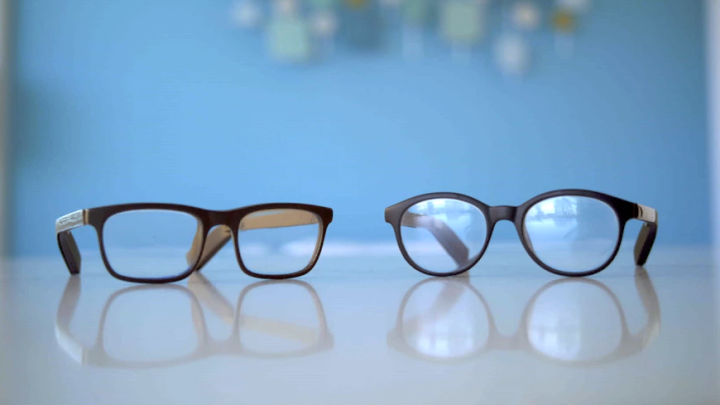
A Kickstarter campaign has been started for a new pair of smart glasses called Vue. But these smart glasses are a little different because they look no different from your standard pair of glasses.
The glasses themselves are not as smart as Google Glass, but the result is a lot less tech you have to fit in a pair of thin frames. In fact, perhaps the biggest change is that there is no display — instead, you communicate with the device through voice. Also unlike Google Glass, the glasses do not have earbuds. Instead, the use bone conduction technology to send sound waves as vibrations through your skull. That way, your ears are freed up for day-to-day activities and there is no unsightly earbud in your ear while you are in a meeting.
Vue also has a little microphone, so you can ask the glasses to do things throughout the day. For example, you can ask to listen to music, make a phone call, and so on.
Not everything we do can be hands-free — so there is a little touch surface on the side of the glasses too. You would not be able to tell that it is a touch surface just by looking at it — it looks just like the rest of the frame.
You can get the glasses in three styles — as a prescription, plain non-prescription glasses, or sunglasses. On top of that, you can choose from different shapes, and from three colors, including black, white, or brown.
So far, the Vue smart glasses have reached a hefty take of over $230,000, well over their $50,000 funding goal, so safe to say they are being funded. If you want a pair for yourself, head to the Vue Kickstarter campaign, where you can currently get a pair starting at $179.
Editors' Recommendations
- I’m replacing my normal glasses with smart glasses. Here’s why
- I wore smart glasses that made me excited for the future
- Forget the Oura Ring — Samsung might be making a new smart ring
- Apple’s AR glasses ‘now appear many years away,’ report says
- CES 2023: These 38-gram smart glasses aim to make AR practical

